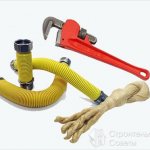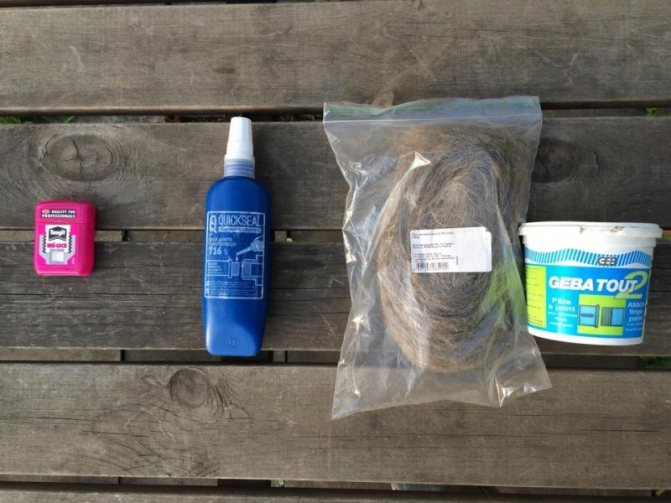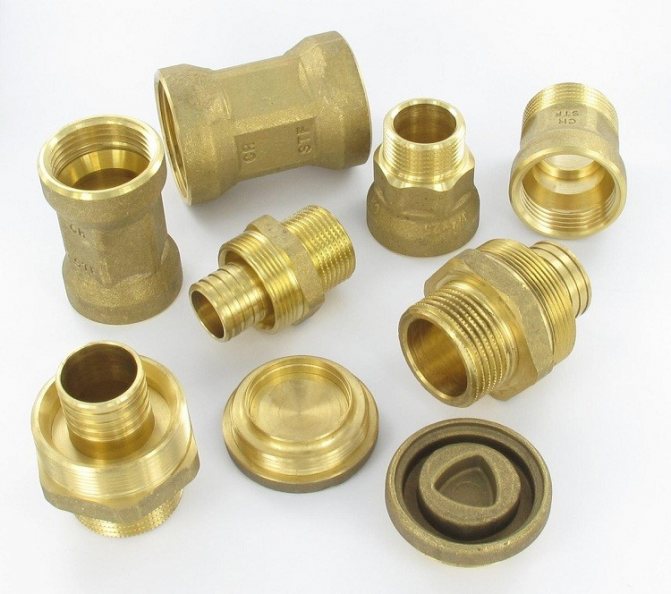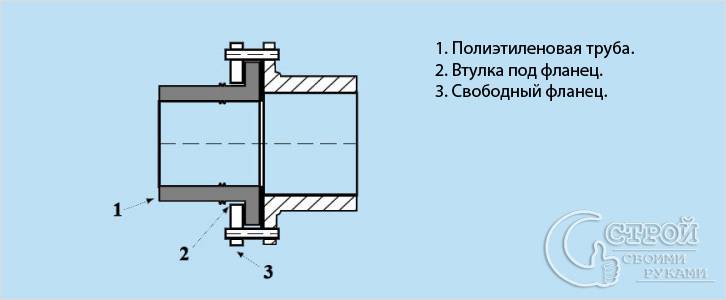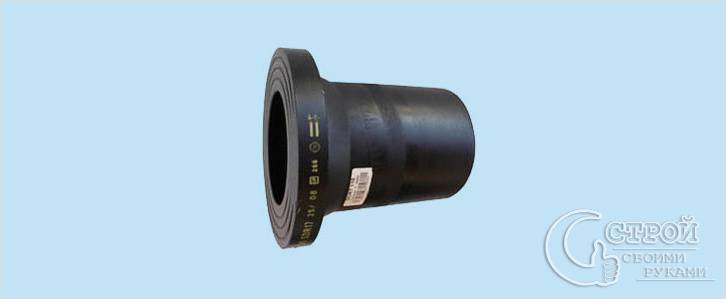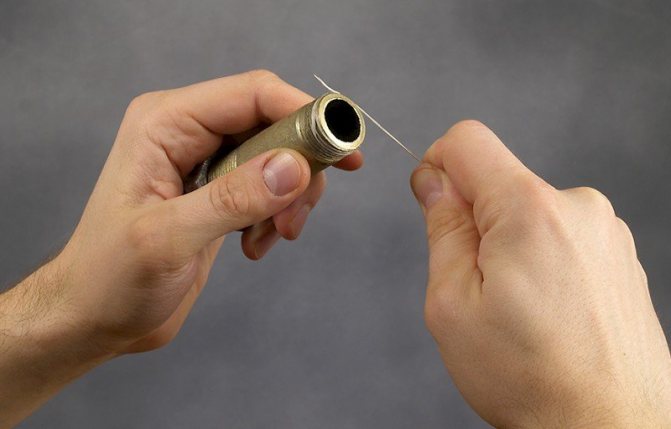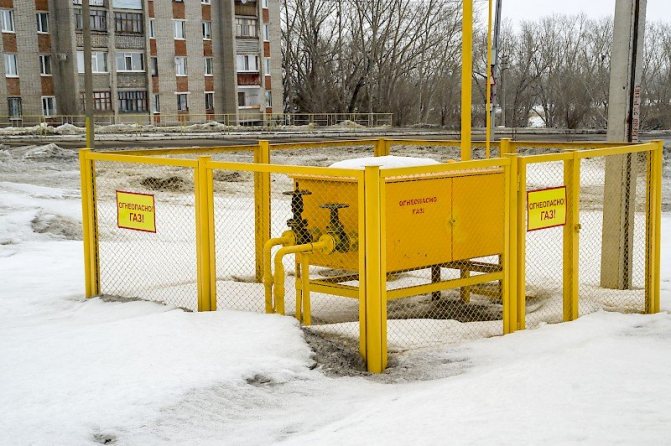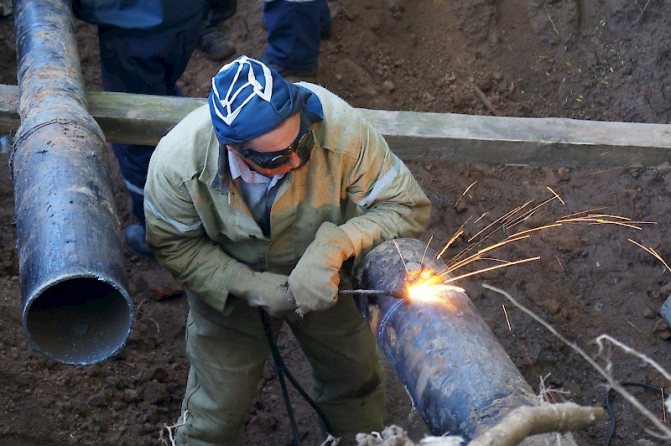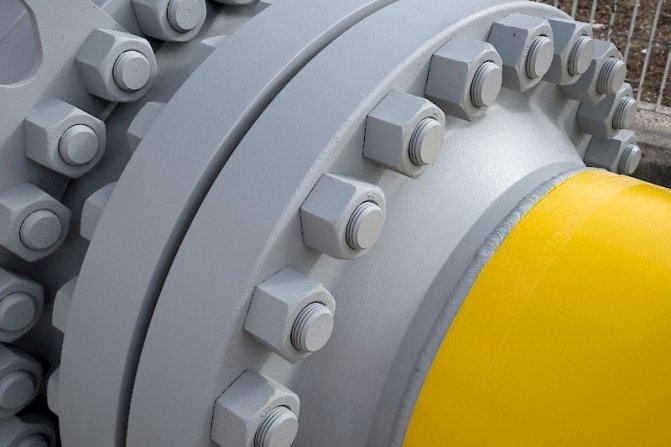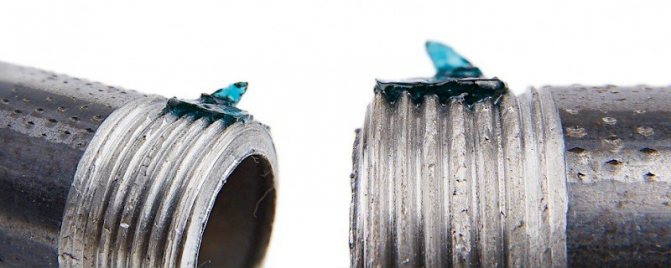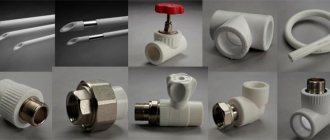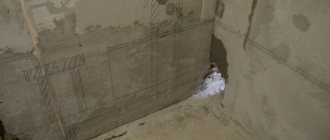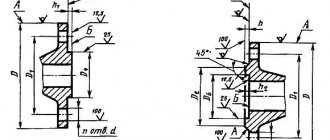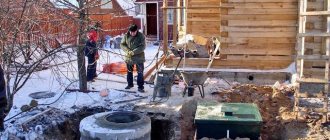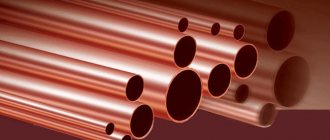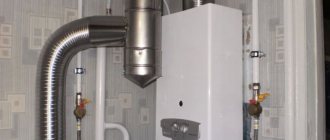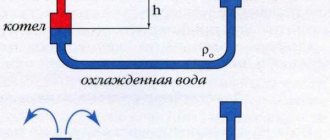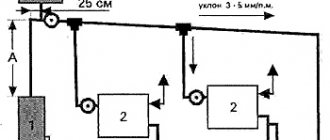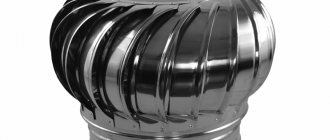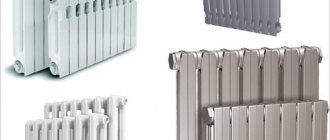Types of pipe connections
There are several main ways to connect gas pipes, or rather:
- Welding - carried out exclusively by specialists who have permission to work with the welding machine. Each employee must have a personal identification card.
- Threaded or Fitting - also includes welding of light pipes, with the sockets being sealed with hemp fiber. The whole process of work very much resembles the connection of sewer pipes. It should be noted that the fiber is soaked in advance with a solution of linseed oil or drying oil. You can also use couplings, which can have both long and short threads.
- Flanged is one of the most common connection methods, since it has a fairly light assembly design. True, according to experts, it is less reliable than welding.
All of the above connection methods are used by professional craftsmen using specialized equipment.
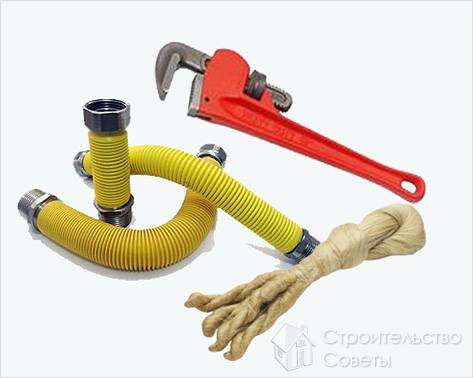
In order to independently connect gas tubes in a house or apartment, you need to prepare the following tools and materials:
- gas adjustable wrench;
- tow and grease;
- connection hoses or pipes;
- if necessary, a connector with threads on both sides.
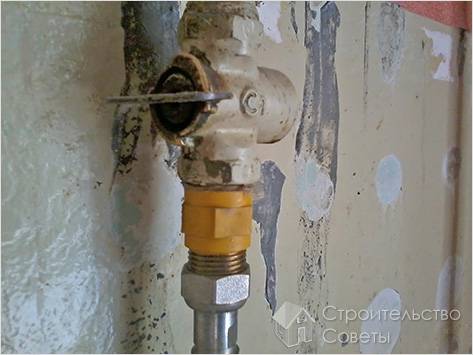

If you shut off the gas supply and bleed the pipes, as previously recommended, then the next step is to cut off the unnecessary parts of the gas pipes. To do this, you can use a grinder, and if one is not available, then a hacksaw for metal is quite suitable, but in this case the process will be long and more complicated.
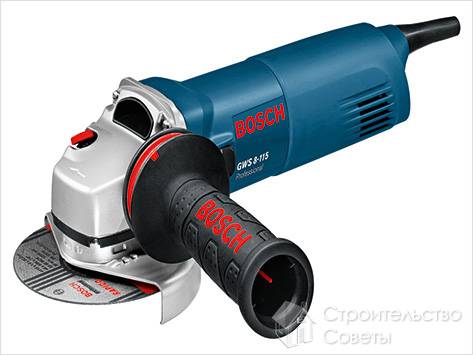

After you have removed the unnecessary part of the gas pipe, you need to carefully weld or solder one end of it.
If you need to connect one end of the pipe to the gas hose, then you will need to thread the sawn piece. For this, there is a special nozzle, putting on which, you will need to scroll several times.
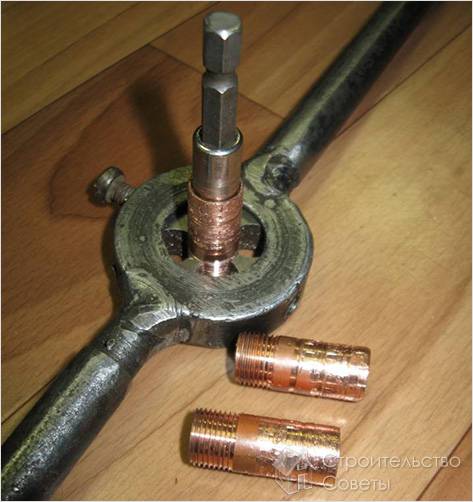

Next, tow is wound on the made thread, which is impregnated with grease and connected to the hose. All these works are carried out using a gas adjustable wrench. If you plan to install a new pipe, then you can use a special connecting adapter. This element has a finished thread on both sides and a nut that is screwed on the main and on the new pipe.
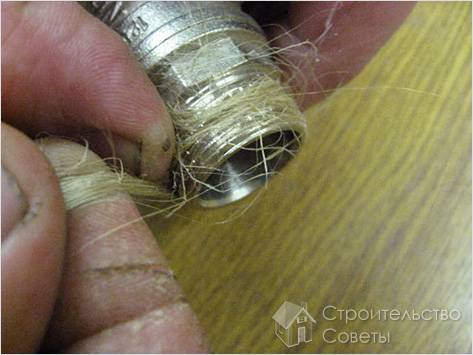

This method can be used in apartment buildings, but you just need to make sure there are no leaks. To do this, you need to open the gas supply, and then apply soap solution to all pipe joints.
If you have never done such work on your own, then it is best to entrust this business to professionals.
Gas pipe connection
Oversized steel pipes with welded seams are usually used for gas pipelines with a cross section of ½ – 2. Seamless pipes are suitable for larger connections in a gas system. It is best to lay underground bitumen steel pipelines without seams, which have not welded, but threaded joints. The principle of adhesion in their parts is similar to that used in plumbing (by the type of fittings). In this case, the sockets are sealed with modern sealants or flax with a special impregnation.
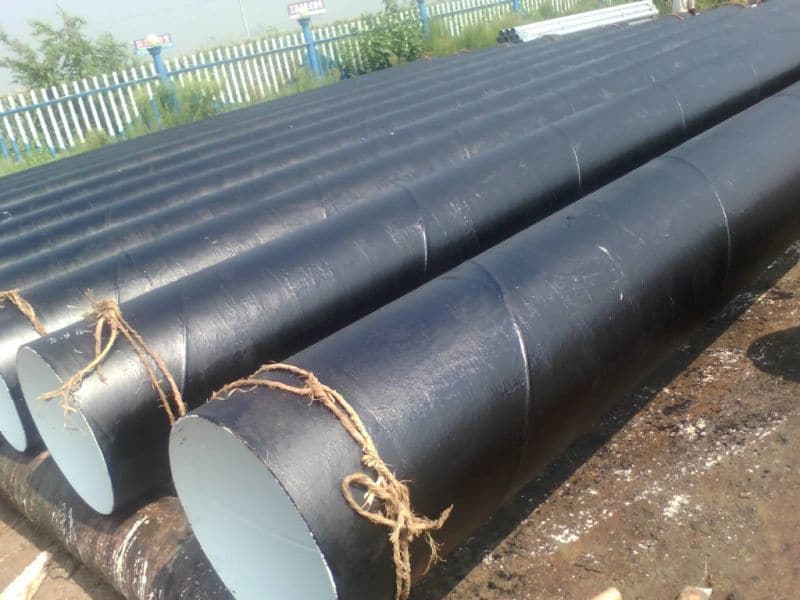

It is undesirable to seal the stopcocks of gas pipelines, because in this case it will be problematic to open them in case of urgent need. Such taps should be tightly fitted to each other and closed by hand or with keys.In the basement, the pipes are joined with clamps and brackets, and where they pass through the wall, they are protected with a special cover. In slag-concrete masonry, the surface of the gas pipeline is additionally covered with an insulating anti-corrosion paint.
Sealants for gas pipe connections are necessary compositions and devices, the use of which cannot be ignored. They provide the proper level of reliability of joints and allow to extend the service life of the equipment.
Domestic duct sealing
Ventilation in apartments and country houses is carried out with thin-walled elements. Often, air ducts are made of rectangular cross-section or corrugated pipes. Threading is not possible on such connections. Therefore, the sealing of ventilation joints is carried out in other ways:
- through the flanges,
- the imposition of a bandage,
- flared method with the insertion of one duct into another.
A flange connection is most often used for non-circular ducts. Sealing is carried out using gaskets made of soft material, such as foam rubber. The shape of the gasket must match the section of the duct.
With other methods, the voids formed after joining the air ducts are filled with mastics, according to their temperature characteristics, corresponding to the operating conditions of the air main. Sometimes the duct joint is wrapped with self-adhesive tape.
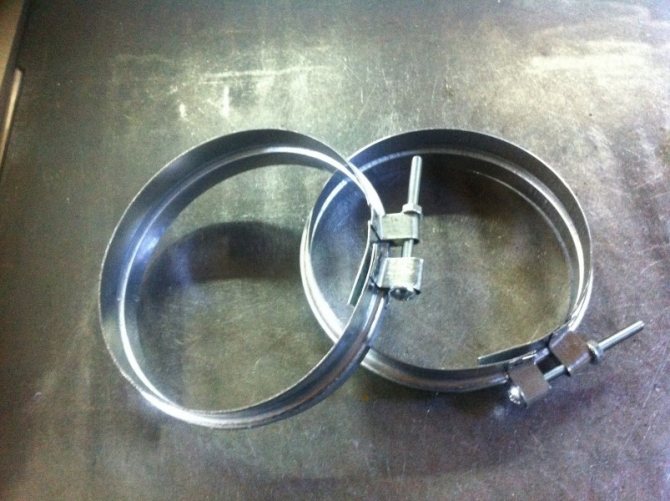

Bandage clamps used for joining round ducts
FUM application
FUM tapes and threads are used to seal threaded connections for hot water supply (DHW), heating systems (CO) and cold water supply (HVS). They are also used when connecting gas appliances to a gas pipeline.
Fluoroplastic is a plastic and strong material with a melting point above 400 degrees, resistant to oxygen and corrosive liquids. The thread and tape fill in the unevenness of the thread and seal the joint. Sealing FUM tapes are produced with a width of 10-16 mm and a thickness of 0.08-0.12 mm., FUM threads - with a diameter of 0.4-1.5 mm. With temperature drops and vibrations, the FUMs are deformed, and the threaded connection leaks.
The tape winding thickness depends on the pipe diameter and tape thickness. For pipes with a diameter of up to 20 mm, 2-3 layers of tape with a thickness of 0.12 or 1-1.5 layers of thread are wound. For pipes with a diameter of up to 40 mm, 5-6 layers or 2-3 layers of thread are wound. For pipes with a diameter over 40 mm, 8 or more layers of tape or 5 or more layers of thread are wound. For main pipelines, it is preferable to use tapes with silicone mastics.
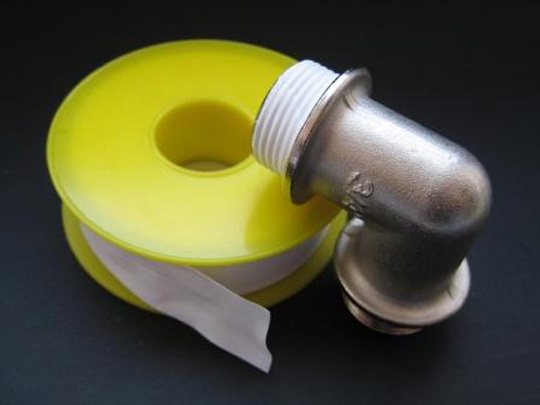

If the thread is rusty, the winding thickness is doubled. Before winding the tape, the threaded joint is cleaned with an iron brush and blown out with compressed air. The tape and thread are wound on the pipe or the thread of the fitting in an interference fit with a force of 0.5-1 kg clockwise. To seal the threaded connections of gas appliances, wind it counterclockwise.
Tapered from the edge of the joint. If pits and damage are visible on the threads after removing rust, use a different seal. FUM is used to seal intact threaded connections.
Do not use FUM to seal heating pipes. Temperature changes will damage the FUM, the connection will leak, and water or steam leaking from the heating system will cause burns.
Is FUM tape used for sealing steam and water heating pipes? No, experienced plumbers seal such joints only with flax (tow) and sealant.
How to seal
There are many types of seals available for sealing threaded connections. Ribbon "fum", flax, "tangit" - sometimes the eyes run up from the choice. Recently, a novelty has appeared - an anaerobic sealant for threaded joints (please do not confuse it with flax paste), which greatly simplifies the procedure.
Anaerobic sealant has a couple of significant disadvantages: 1.The parts to be connected must be dry and clean - this can be a serious problem when repairing and replacing parts in a working system. 2. It takes time for the sealant to harden, albeit insignificant, but it slows down the entire installation process. In addition, there is reason to believe that the connected parts should not be disturbed in any way during subsequent repairs. In general, such a solution is suitable for a beginner, for minor repairs. This material is not quite suitable for a professional.
Note: A good plumber will connect to any of the above seals and will not leak. We will focus on the time-tested material that is used by the overwhelming majority of specialists: sanitary flax and paste for it
.
In general, flax can be used without investment paste, but it generally increases the reliability of the joint and simplifies the operation. Linseed fibers tend to rot over time or dry out on hot water pipes - the paste prevents these problems. An important property of the paste is the ability to hold pressure in a loosely twisted thread.
Winding tape on pipe threads
This operation is always performed on the outer thread. If repairs are carried out with the replacement of the fitting, the pipe threads must be thoroughly cleaned of dirt and rust, degreased with acetone or white spirit, dried in air for about 10 - 12 minutes. How to use a pipe finisher to ensure its effectiveness:
- the seal must be wound on the thread from its rear end;
- the FUM tape is applied in the direction of its descent, that is, its end should be located in the direction of screwing the fitting;
- winding is carried out with a tension that ensures a tight fit of the pipe thread profile; it is better to allow the tape to break than to perform loose winding;
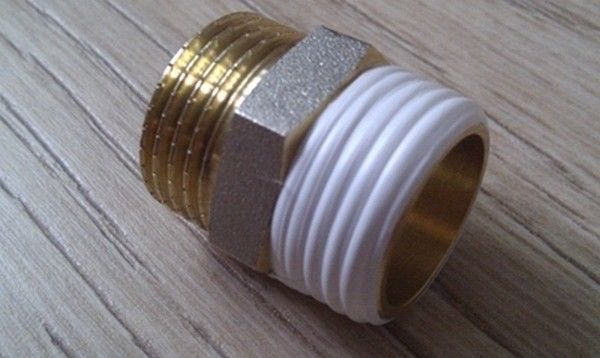

If there are no such notches, you need to make them yourself.
FUM tape for pipes is a modern and most frequently used tool for sealing joints in pipelines for various purposes. FUM corded products that have appeared in recent years do not provide any particular advantages either in application technology or in efficiency.
To understand how to use FUM tape for gas pipes, you need to take into account the characteristics of the material and apply it in an appropriate way.
Watch the video
Alternative materials - linseed tow
Various seals are used, including strand bast fibers and various sealants.
One of the first sealing materials that have found wide application in the installation of pipelines is tow. This is also the name of the linen fibers in the form of strands wound on the external thread of the pipe to the present day.
In this case, it is important to wind it neatly along the turns, filling in the full cutting profile. For more reliable sealing, the tow roll is covered with additional materials, from thick paint to specially developed sealants
The advantages of sealing plumbing tow joints are as follows:
- the ability to adjust the mating at the location - it is allowed to unscrew the fitting in the opposite direction at an angle of up to 45 degrees without losing the insulating properties;
- sufficiently reliable tightness and ability to absorb moisture;
- the joint is resistant to mechanical stress;
- facilitated dismantling of the joint.
The disadvantages include a tendency to decomposition as a result of putrefactive processes, since the material belongs to organic products.
Video
There is no unambiguous answer to the question of choosing a method for sealing a threaded connection. The undoubted advantage of using the tape is the connection of cantilever elements, such as taps or mixers, pipe couplings are best done with plumbing tow.
Sealants
Not only increases the impermeability of the connecting area, but also significantly increases its ability to withstand mechanical stress
Which is very important in pipeline systems due to constant vibration effects and water hammer
The sealant hardens on contact with air or the mating surfaces of the threaded joint, while working like an adhesive and transforming the assembly into a monolithic part.
The most common classification method is by color and there are two main positions for this division:
- blue - represents medium strength sealants. It is able to significantly reduce the intensity of the thread weakening process. In practice, for the slightest weakening of the joint, prolonged exposure to serious loads of an alternating nature will be required. But when using blue sealants, it is still possible to turn the thread, albeit with great difficulty;
- when using red sealants, such an operation without heating does not seem realistic. With such a gel, the structure is simply glued together. For the pipeline, it is used in places with strong vibrations (from pumping equipment) and with the possibility of water hammer.
Conclusion
FUM tape for gas pipes is one of the main methods of sealing joints during pipeline installation. The methods outlined here on how to use a gas pipe fume take into account all the main features of the material, but do not exclude the performer's creative approach to this important operation. It should be understood that the gas pipeline is a source of increased danger.
Video
Types of detachable connections
The types of detachable structures include squeegee and bidirectional threads.
In fixed sections of the pipeline, a connection using a squeegee is used. One end of the pipe has a long thread, the other a short one. Long threads are fitted with a locknut sleeve. Then the coupling is moved by twisting on a short thread until it stops, tightening it with a lock nut.
Important! In connections with bi-directional threads, the coupling is screwed onto both pipes at once. But the threads of these pipes must diverge in different directions in order for them to converge when the coupling is twisted.
What methods are used to seal the joints. All steel pipe fittings are carefully sealed. If the two parts of the pipe are equal, then a gasket is used for this. The seal is ideal if using a union nut.
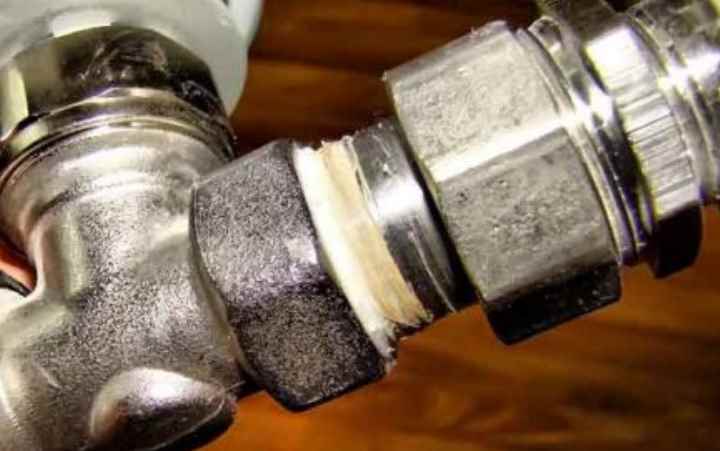

Also, as a gasket, various seals are used in the form of flax, asbestos, red lead or graphite putty, and also whitewash. Installing threaded cylindrical pipes, which are used to transport hot water up to one hundred degrees of water or cold, a linen strand treated with white or red lead mixed with drying oil is laid between the elements. For pipelines through which water passes over a hundred degrees, as a sealing gasket, the use of a cord made of asbestos and flax impregnated with graphite mixed with drying oil is suitable.
Before screwing the coupling onto it, the thread of the pipe is processed with red lead or white. The linen thread is wound along the thread, starting from the end of the pipe structure in an even layer so that there are no cracks, and at the same time the layer is not thick. Beforehand, the flax strand must be dried and rolled out well, for free separation of each fiber. Next, the thread is well lubricated with red lead.
Important! The thread should not hang at the end of the pipe, or penetrate the pipe, this entails clogging the pipeline system.
The coupling is screwed onto the sealed part of the pipe by hand, then it is wrapped using an adjustable wrench.
The fittings for the connection must be screwed up to the stop, applying forces until the thread runs out, in this place the pipe has a conical shape due to the unfinished thread, thus, the structure is tight. When screwing in on a short thread to the stop on both sides, the coupling cannot move if the pipe expands with a change in temperature. On both sides it is supported by pipe sections without threads.
For pressure sewage, conical threaded connections are used. When screwing in, the ends of the pipes are tightly pressed, excluding gaps, the sealing is carried out using synthetic sealants.
Using the FUM tape for the gasket, you need to clean the thread, then screw the fitting. If the sealing is not of good quality, then it is worth replacing the sealing material. First, remove the tape from the thread, put on another gasket and connect the elements.
Important! If during installation it is necessary to use welding of any section, then the FUM tape should be wound only after welding.
Leakage Fight
Repairing a heating system leak with a sealant is a chemical leakage control.
The specified German sealant proved to be excellent in solving this dilemma. Also used such means:
- Two component epoxy based resins.
- Silicone adhesive compounds.
- Heat-resistant compounds based on rubber.
Their algorithm:
- The damaged area is degreased, dried, covered with a thin layer of sealant.
- Further, it is wrapped with a serpyanka. Serpyanka reinforces the sealed layer.
- Serpyanka is already covered with a sealant. The action is repeated.
If a silicone agent is used, no abrasives need to be used to sand the damaged area. And this type of sealant sticks better to a smooth surface.
Welding of gas pipelines
Welding of gas pipes under pressure is carried out by highly qualified welders who have certificates for such work.
Manual arc welding and flash resistance welding do not provide reliable corrosion resistance of the joint area
, only the pressure welding method eliminates these disadvantages.
Welding in a special welding installation takes place in the following way: - the pipe is fed along the roller conveyors until it stops in the stopper of the immovable clamp and there the pipe is clamped. The second pipe is fed all the way into the first pipe, then the movable clamp is clamped; - a special mechanism regulates the difference in edges and a preliminary pressure is created at the joint through the movable mechanism; - by longitudinal and transverse movement of the calipers of the heating unit, the inductor is first adjusted to the joint and then closed; - turn on the source of induction heating, and when the welding temperature is reached, the time relay will turn off the heating source; - the time for welding one joint is given no more than one minute; - a command is given for the upsetting of the pipes being welded, after upsetting the clamping devices are unclamped, the movable clamp returns to its initial position and the installation is ready to accept a new pipe.
This welding method is used in the gas industry to join black pipes and pipes with an internal anti-corrosion coating.
Welding gas pipes
Electric arc and gas welding devices can be used to align pipelines. First, the edges of the pipes to be joined are prepared. To get a high-quality seam, they must be cleaned of any contamination. After that, you need to make a bevel. It allows you to get a strong and tight seam, since the molten metal completely fills the joint area.
In most cases, manual or semi-automatic electric arc welding is used. In electric arc welding, the optimal electrode diameter is from 3 to 4 mm. The wall thickness of gas pipelines should be no more than 5 mm. In addition to preparing the edges (at least 1 cm wide), it is necessary to make additional bevels.Further, centering and tacking is carried out evenly in 3-4 places. After that, welding is performed in 2 layers. In order to obtain a tight seal, it is important to capture the adjacent areas of the products when making the final seam.
In gas welding, one pass is usually sufficient. The wall thickness of gas pipelines should be no more than 4 mm. Otherwise, the seam area will overheat, which will negatively affect the strength of the joint. To avoid lack of penetration, the end of the seam must be done with some overlap. When choosing an additive material, the steel grade of the gas pipe should be taken into account.
Requirements for gas sealants
In order to completely eliminate gas leakage at the connecting points of the gas pipeline system, it is necessary that the winding meets the following requirements:
- resistance to vibrations of varying intensity;
- resistance to sudden changes in temperature and internal pressure;
- protection of the connection from the formation of corrosive deposits;
- ease of installation and dismantling in case of repairs;
- durability and long period of use.
All sealing materials must be checked by specialists for strength and certified for work in gas supply systems.
Types and conditions of sealing
It is necessary to insulate joints when laying pipes for different types of pipelines. The only exceptions are welded joints, but this is also their disadvantage - they are one-piece. And joints using threads make it easy to replace a damaged area or insert a new harness.
Therefore, sealing is necessary for threaded pipe connections:
- hot and cold water supply,
- gas pipelines,
- heating.
In practice, the thread is used in small-diameter lines - in internal wiring at home and in an apartment, country cottages and when laying networks to detached buildings with low water and gas consumption. For large-diameter water supply and heating pipes, flange connections and welding are used.
Ventilation ducts, as a rule, have a large cross-section and are made of thin-walled sheet or corrugated pipes. Therefore, threaded connections are not used in them, but sealing of the joints is still necessary.
When choosing a method for sealing pipe connections, it is necessary to take into account their properties and the conditions in which they will function:
- The external temperature of the medium and the internal medium in the pipeline. Some types of sealants lose their properties at elevated temperatures or in frost.
- Line pressure. Liquid insulators can be squeezed out of the joint at high head.
- Pipe diameter.
- Final bond strength. This is the effort required to disassemble an insulated joint in the event of repair or reassembly.
- Environmental Safety. When laying pipelines for drinking water, do not use substances that can emit toxic compounds.
Most of the means and substances used for sealing, according to these parameters, fit into the range required for joining household pipelines. But a particularly careful choice is necessary when sealing the joints of gas pipes. Violation of the tightness in the water lines is noticeable from the very beginning on the traces of leaks at the joints. Gas leaks do not manifest themselves visually and may remain undetected for a long time.
Types of pipes
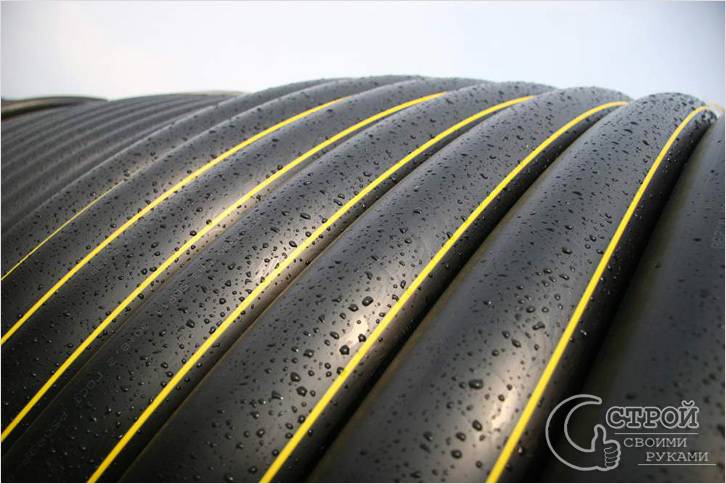

Polyethylene gas pipes
Until a certain point, seamless metal pipes were used for gas lines. But their lifespan is limited due to the corrosive effects to which they are exposed due to precipitation and other factors. Therefore, along with them, they also began to use:
- Polyethylene. Much cheaper to manufacture than metal mining, the material is also resistant to the design pressure in the mains.High elasticity, as well as the tightness of the joints, is very useful in soils that are heaving. Plastic is a dielectric and therefore does not conduct current. This is the key to safety in the event of problems with the electrical network.
- Rubber. To a greater extent, this material is used to connect the central channel with the consumer, be it a boiler, a gas water heater or something else. A composition is selected that does not dry out due to exposure to sunlight.
- Stainless steel. More precisely, the braid is made of this material. The inner tube is a PVC sleeve.
- Copper. It has recently been officially approved for low pressure ducting. The advantages are resistance to corrosive effects of both water and other substances.
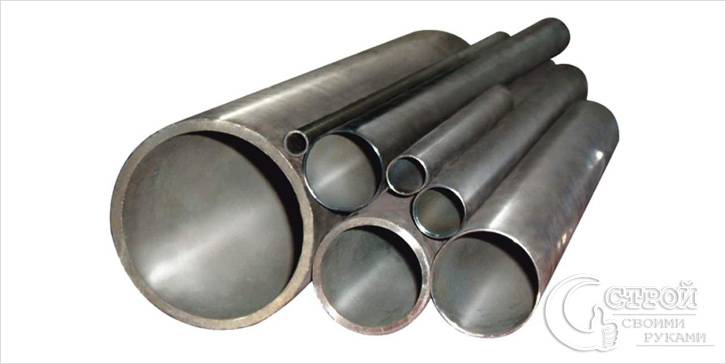

Steel gas
The choice of product will depend on the specific conditions and the already installed system.
Features of mounting a chimney for gas appliances
When installing gas heating appliances, as well as oil radiators, it is necessary to pay due attention to the issue of competent organization of the removal of combustion products from the premises. And this is correct, because, in addition to creating a safe environment for humans, they increase the efficiency of the heating devices themselves, contribute to their more productive and economical operation.
To determine the diameter of the gas outlet, it is necessary to take into account:
- The amount of combustion products.
- Heating appliance power.
- The temperature difference between the outside air and combustion products.
- The height of the chimney pipe.
The installation of exhaust pipes for gas appliances, in accordance with the rules, is carried out next to the inner walls and near partitions made of non-combustible materials. If necessary, it is also allowed to install them in external walls, also from non-combustible materials. In this case, in order to avoid the appearance of condensation during the removal of combustion products, the walls are insulated from the outside. If there is no wall in the room that is suitable for placing exhaust pipes in it, you must use a main pipe or a top pipe for a gas appliance.
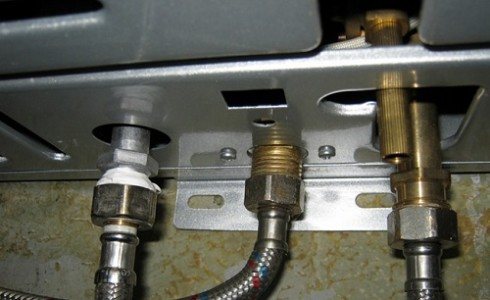

It is necessary to provide the most open access in the pipes.
Installation of gas appliances that do not have a connection to the flue duct is carried out exclusively in a place where at least 5 m3 of free space will be allocated for each burner. A small water heater, not equipped with an exhaust gas combustion products, must be discharged at least 6 m3. A gas water heater for a shower room or bathroom must have an exhaust for gas combustion products and a free space of at least 10 m3.
If there is not enough required volume in the room where the gas stove is being installed, then a ventilation outlet must be made above it. Since gas appliances use air from the combustion room, it must be freely accessible. For this purpose, a small gap is left under the floor door (the area of the gap is derived from the calculation: for every 1000 kcal / h of the power of the gas appliance, at least 10 cm2 is needed).
All heating devices, gas water heaters, etc. equipped with a fuse to cut off the gas in the event that the fire goes out.
The installation of gas heaters must always be carried out with a connection to the chimney in all cases, except for one: if it is a heater with a closed combustion chamber. Then the flue gas outlet and the air supply to the burner are separated from the room. A chimney with a cross-sectional area of 200-220 cm2 can be connected to a pair of gas appliances on one floor with a gas flow rate of 8 m3 / h. The distance between the inlets into the chimney in height must be at least 30 cm.To connect four gas appliances from one apartment with a gas flow rate of 12 m3 / h, a chimney with a cross-sectional area of at least 300 cm2 is needed on one floor.The connection of gas appliances with one chimney on different floors is unacceptable.
Chimneys for gas appliances are located above the roof in the same way as conventional chimneys. When, during the reconstruction of a house, it is impossible to use the old chimney for the removal of gas combustion products, a new chimney is made from pipes that are connected to the rear facade of the house. These pipes are made of galvanized steel sheets, and, unlike pipes for the removal of combustion products of liquid and solid fuels, they are connected with joints that are directed in the opposite direction from the movement of gases.
During repairs or restructuring, when the tightness of the gas pipes may be compromised, it is necessary to check their integrity at the end of the work. For this purpose, air is allowed into the pipes at a pressure that is twice the pressure that is necessary in them during the passage of gas (approximately 500 mm of water column).
Before checking, you need to close the taps. If within five minutes the pressure in the pipes drops by more than 20 mm of water. Art., then you need to look for damage in the pipe (the alleged places of damage must be moistened with soapy water). The gas pipeline for liquid gas is checked for tightness in the same way under a pressure of 1200 mm of water. Art.
Threaded connections are applied to pipes, as well as connecting and branch fittings. But the simplicity and reliability of the connection of any pipelines using a thread still does not provide its complete impermeability. Therefore, a mandatory addition is the sealing of pipes at all points of threaded joints. Only this combination can create a reliable connection.
Welded connection
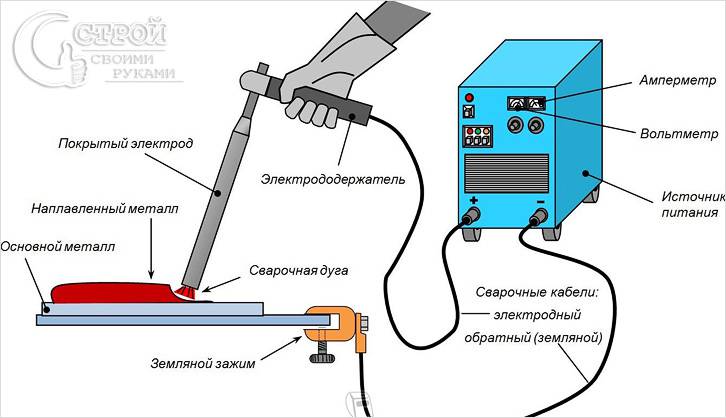

Arc welding
The concept of a welded joint is applied both to metal pipes and polyethylene pipes. To solve the first problem using the arc method, you will need the following tools:
- inverter or transformer welding machine;
- electrodes;
- protective mask;
- gloves;
- a hammer or brush for processing a seam.
The work is carried out in this way:
- If possible, it is better to fix the blanks well. This is necessary for the convenience of the master.
- In order to ensure complete tightness, a gap of 2 mm will need to be left between the pipes. This will allow the flowing metal to cling to the ends.
- Fixation is carried out with small tacks at several points.
- In the main process, the electrode should be guided from bottom to top.
- It is important to ensure that there is no overheating. The consequence of this can be unnecessary stress at the joint, as well as the burning of the metal nearby.
- Some craftsmen put two stitches. One serves to fill the space, and the second acts as a belayer.
- Don't knock off the dross right away. You should wait at least 15 seconds. Thus, the necessary seizure will occur and there will be no microcracks.
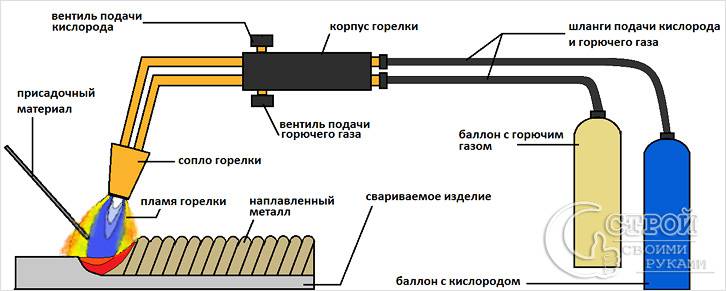

Gas welding equipment
When using gas welding equipment, the requirements for fixing the workpiece will be the same as in the previous case.
- The first step is to open the current from the oxygen cylinder, then from the acetylene gas.
- If there is air in the hoses, the ignition may not occur immediately.
- The flame is regulated to the required value.
- The welding place warms up well.
- After that, a special electrode is brought up. It is necessary to lead it so that it forms an influx, but does not flow down.
- At the end of the process, the part is cooled.
Note!
Joint check for any connection option is done in one simple way. A soapy solution is being prepared. It should foam well. It is applied to the desired location. If bubbles appear, then there is a fistula. It is strictly forbidden to carry out the test with an open flame. It can be explosive.
For polyethylene pipes there is also the concept of welding, but it is carried out by a different method.In this case, an apparatus is used that is capable of giving a low voltage at the output and controlling the required temperature. But the main one in this case is the connecting fitting. Its design includes a heating element. As the process proceeds, it begins to melt the space around itself, which leads to the formation of a homogeneous mass, which, after hardening, seals the seam.
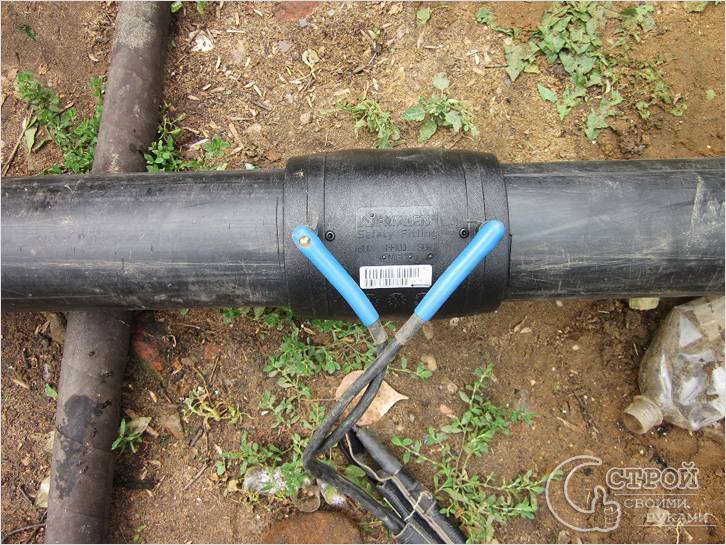

Electrofusion welding
A step-by-step solution looks like this:
- The ends of the pipes are being prepared. To do this, they are cut using a special cutter. You cannot do this with a hacksaw. The planes must be absolutely flat, without broken chamfers and burrs.
- A mark is made from the edge. The distance to it is equal to half the size of the fitting plus 2 cm.
- With the help of a special scraper or machine, the oxide layer is eliminated. This should be done evenly, going deeper into the same size. In order to make it easier to navigate, you can draw additional perpendicular lines, as you cut them, it will be easy to judge the correctness of the execution.
- All burrs and shavings are eliminated.
- Docking areas are wiped with a suitable solvent or a napkin with alcohol.
- The fitting is put on up to the marked mark. If one of the pipes is stationary, then the sleeve is hammered to full size. The second element is brought in and the connector is carefully displaced to evenly close the nozzles.
- Plugs from the welding machine are connected to the clutch contacts.
- An optical scanner reads the information printed on the barcode and starts the process.
- The unit will determine by itself what temperature and voltage is required, as well as how long the cooling period will be. It is important to fully withstand all stages. Only in this case can we talk about reliability.
- After completion, all information about time, date, operator, temperature and voltage is necessarily applied to the welding site.
Such tools are usually used on main sections where pipe diameters exceed 80 mm.
The process of electrofusion pipe welding is shown in the video:
Natural seals
Jute and tow is used in conjunction with silicone sanitary sealants. The thread is cleaned of dirt and rust, coated with a sealant, the sealant is twisted into a thread and wound clockwise flush with the thread crest. When winding, the seal is tensioned with a force of 0.5-1 kg.
After winding, carefully coat with sealant and assemble the connection. Within 5-8 minutes, until the polymerization process is completed, it is necessary to check and, if necessary, tighten the connection. Tightening the nut after the sealant has cured will result in leakage.
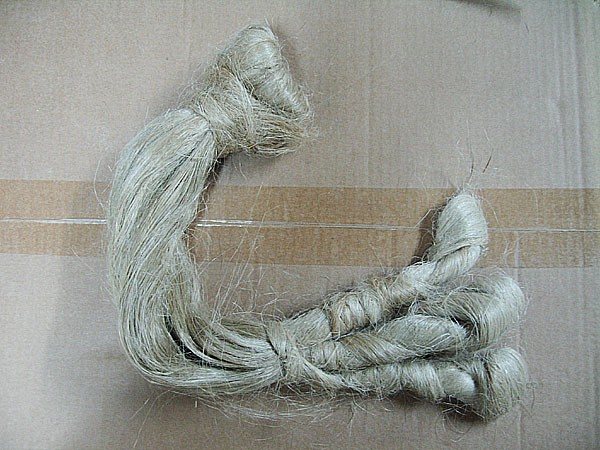

Stores sell ready-made plumbing thread made of flax for sealing pipes. It does not need to be twisted. Before buying a thread, read on the packaging what it is made of and whether it contains silicone or acrylic sealants. If this is a fluoroplastic thread, it is undesirable to use it on damaged threaded joints, if it is vegetable without sealant, then purchase a separate sanitary sealant.
The owners of apartments and houses ask: "Which thread is the best for pipes?", Implying the brand. To which a professional plumber will answer: "Better the thread that has been skillfully wound."
If the thread is more or less than necessary, or if it is not wound along the thread, the connection will leak. Do not wind it "with a margin", wind it as much as necessary and do not forget about the sealant.
Types of sealing tapes
This material is produced in the form of winding on a reel up to 10 meters long. It is successfully used for winding pipe threads in pressure systems, including plumbing, gas and heating.
Its purpose in the joints is a deformable filler that acts as a thread lubricant, contributing to an increase in tightness. This seal is available in 3 types:
- type 1 - for use in pipeline systems for the transportation of corrosive liquids, it is used with the use of purified petroleum jelly;
- type 2 - for pumping strong oxidants, which prohibits the use of an additional sealant in the form of oils;
- type 3 - used for transportation of relatively clean liquids and gases, the use of lubricants is excluded.
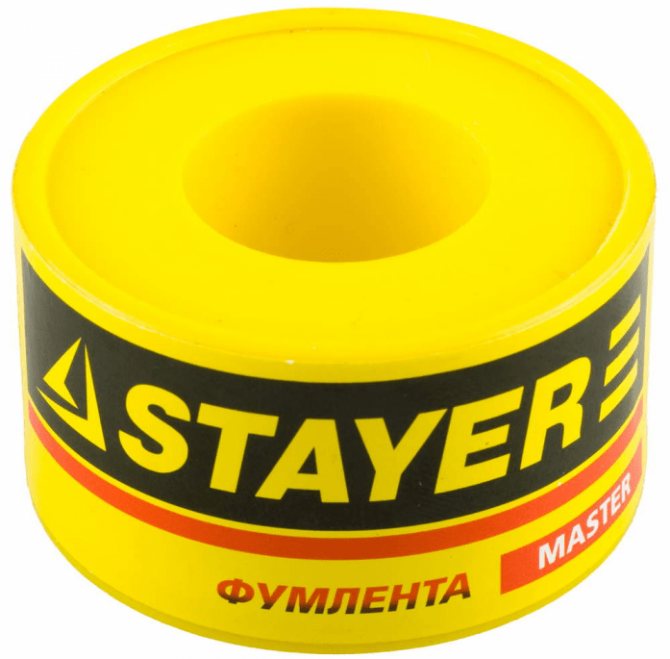

Types of gas pipes
More recently, the question of the types of pipes for gasification would not have been, because they were made of one single material - steel. And that's it, no alternative or choice. But times go by, technologies do not stand still, and now steel is slowly replacing polymer. Namely, special polyethylene, which is produced under low pressure, has a correspondingly high density.
In addition, polyethylene has a number of enviable advantages, moreover, in terms of safety of use.
HDPE gas pipes do not rust, do not corrode and do not crack, even with temperature changes. For gas, such stability is very important, because constant pressure must be maintained, and a microcrack is fraught with dangerous leakage.
Polyethylene does not react chemically and remains neutral to liquids and gases. Due to its strength and elasticity, the material can be mounted even at sub-zero temperatures and not lose strength and its conductive ability down to -45 degrees. In addition, it is not a conductor of electric current, therefore, it is not subject to electrochemical destruction.
And one more advantage is low weight and ease of connection, which adds to its popularity.
However, the following important detail should be considered here. Gas pipes to houses are laid exclusively of steel; polyethylene is used inside apartments.
Thread sealing with thread.


For those who are too lazy to twist flax into bundles and then smear it with paste, they came up with a sealing thread. The thread can be made from different materials:
- Polyamide - designed for a pressure of 16 atmospheres on water and 8 atmospheres on gas, has an upper temperature threshold of 130 ° C.
- Fluoroplastic - has characteristics identical to the FUM tape, but usually costs more.
Manufacturers lubricate the thread with a special lubricant, the composition of which they do not disclose. In my opinion, PTFE thread is better in quality and I recommend it to you, despite the fact that it is more expensive than polyamide thread. If you want to know how to wind the thread correctly, then watch the following video:

